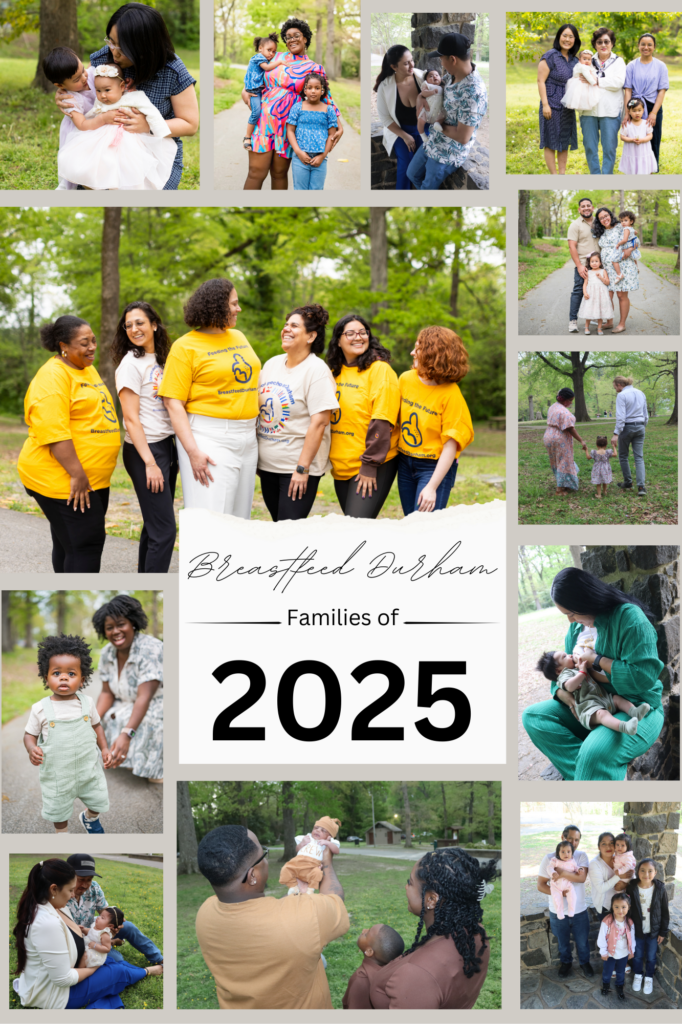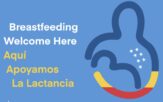At Durham’s 2025 First Food Equity Series, community members issued a clear call to action: Let’s not wait for perfect systems—let’s each do one thing this year to fill the gaps in care. Below is a shared roadmap drawn from that call, reflecting what our neighbors said they need and what we can do together. This year’s focus includes strengthening linguistic access, rebuilding peer-to-peer and neighborhood-based support, improving hospital and NICU collaboration, increasing representation in visuals and outreach, deepening infrastructure and referral systems, sustaining culturally responsive training, and encouraging small but meaningful individual actions.
Start where you are. Take one action. Then keep going.
365-Day Action Plan to Address Gaps in Culturally and Linguistically Appropriate Lactation Support in Durham

1. Strengthen Linguistic Access
- Translate core lactation resources into Spanish, Burmese, Vietnamese, and Arabic.
- Build a Durham-specific bilingual lactation resource guide with verified contact info and service hours.
- Recruit and support bilingual peer supporters, especially those fluent in Spanish and Vietnamese.
- Improve coordination with interpreter services to enable real-time virtual or in-home lactation consults.
2. Expand Peer-to-Peer and Community-Based Support
- Relaunch and maintain in-person peer lactation support groups in underserved neighborhoods.
- Host regular meetings for the Black Breastfeeding Coalition, Lactancia Latina Coalition, Tea and Milk Coalition, and LGBTQ+ Lactation Support Network.
- Provide stipends or in-kind support (transportation, childcare, meals) to active peer support leaders.
- Organize at least four community-based lactation events in neighborhoods with low access to care.
3. Strengthen Hospital and NICU Collaboration
- Develop a warm hand-off process from Duke and other area hospitals to WIC, Breastfeed Durham, and peer supporters.
- Train NICU staff on the importance of human milk for medically fragile infants and how to refer families to community resources.
- Advocate for improved lactation staffing and protocols within Durham hospital systems.
- Provide cross-training opportunities between hospital-based and community-based lactation providers.
4. Increase Representation and Visibility
- Review all public-facing Breastfeed Durham materials for inclusive language and imagery.
- Expand the availability of picture books and handouts that reflect diverse family structures and racial identities.
- Launch a visual storytelling campaign with real photos and testimonies from Durham families about their lactation journeys.
5. Build Collaborative Infrastructure
- Update and maintain a public directory of Durham-based lactation providers and peer support groups.
- Host quarterly collaboration meetings with WIC, doulas, CHWs, hospital liaisons, and peer groups to share updates and address referral gaps.
- Ensure the Breastfeed Durham website remains current with working links and timely events.
- Create a system for community members to report errors, suggest updates, or recommend new resources.
6. Sustain Equity-Focused Training and Reflection
- Offer annual training sessions for peer supporters and professionals on linguistic equity, LGBTQ+ inclusion, and serving BIPOC families.
- Continue the annual Step 6 community reflection and action-planning meeting.
- Establish a monthly discussion series or professional development offering for lactation providers focused on cultural humility.
7. Encourage Individual Action
- Invite one new parent, provider, or peer to a support group, coalition meeting, or walk-and-talk.
- Hang a “Breastfeeding Welcome Here” sign at your place of work or worship.
- Reach out to one new community partner or WIC office to explore collaboration.
- Volunteer one hour this year to help with translation, outreach, event support, or resource updates.
